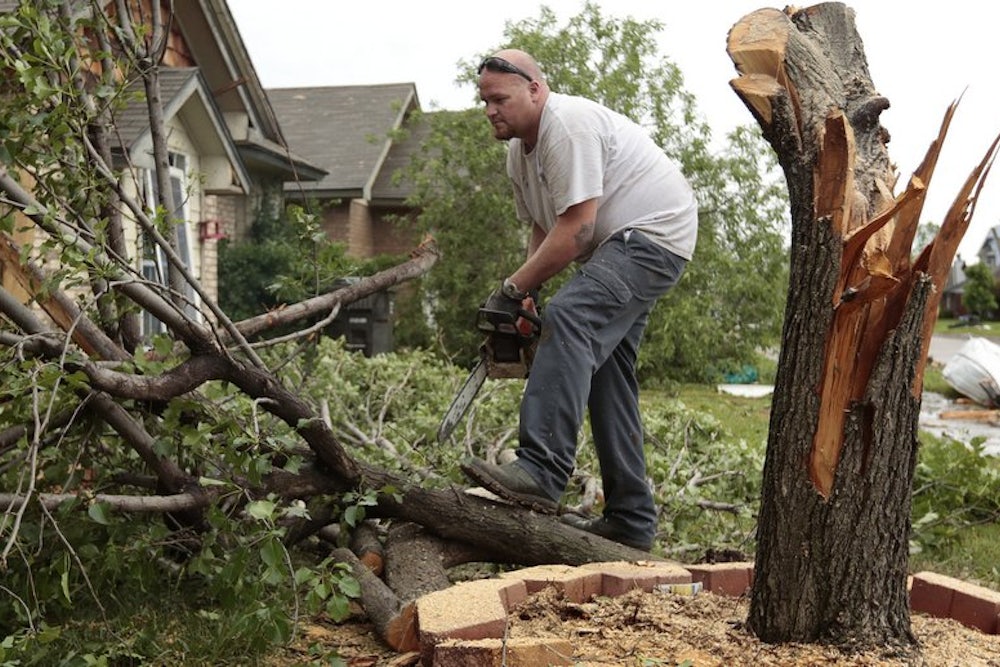From a scientific perspective, hurricanes are easy. They take time to develop and endure for days, allowing forecasters to identify and track them well before landfall. And Hurricanes are hundreds of miles wide, which obviates the need to predict the storm’s path with great precision. With so much warning time, residents can evacuate from the path of a hurricane. Tornadoes, on the other hand, are all but impossible. And will continue to be.
Tornadoes are tiny—rarely more than a mile-wide. They're cloaked by rain and covered by their parent thunderstorm, making them undetectable by the satellites that constantly monitor the oceans for hints of a developing hurricane. And although the conditions favorable for tornadoes are relatively easy to predict, it’s impossible to predict which thunderstorm will produce a tornado until Doppler radar detects a rotating storm—which could be just minutes before the tornado forms.
Yesterday, the National Weather Service issued a tornado warning 16 minutes before the twister touched down—and 36 minutes before it hit Moore, Oklahoma. That's not much time, but it represents a substantial improvement from the 1980s, when warnings were issued an average of five minutes in advance. As a result, the number of tornado deaths has declined, and outright plunged per capita, over the last century. Unfortunately, 36 minutes of advance warning wasn't enough to save every life in Moore—taking shelter is no guarantee of safety when facing a devastating EF-5 tornado, which possesses winds stronger than any hurricane.
It's tempting to assume that climate change is responsible for an increase in the number devastating tornadoes, like those that ravaged Joplin, Missouri, in 2011, and Hattiesburg, Mississippi, in February. But if these tragedies are indeed becoming more common, it's mainly because of population growth. Sixty years ago, yesterday's tornado might not have killed anyone at all: Moore had a population of 942 in 1950, but today has more than 56,000 residents.
There has been an increase in the number of reported tornadoes: Since 1950 (or even over just the last two decades), the U.S. has added Doppler radars capable of detecting tornadoes, and population growth has increased the number of on-the-ground observations. But it's unclear whether tornadoes have become more frequent, let alone because of climate change.
A NOAA study cast doubt on the climate change case, since the conditions that tend to produce tornadoes—like an unstable atmosphere and wind shear—haven’t become more common over the last few decades. However, the number of days with extremely high levels of atmospheric instability (Convective Available Potential Energy, or CAPE) has risen since the 1970s, and climate models suggest that higher levels of atmospheric CO2 could further increase the number of days with high CAPE levels.
If true, more powerful tornadoes might become more common, bringing more tragedies. Further improvements in tornado warning lead-times might save a few more lives, but unless you have a tornado shelter, there's no place to hide from an EF-5 tornado. Unfortunately, the residents of Moore learned that first-hand on Monday.
